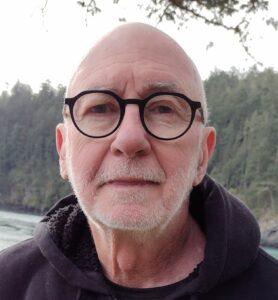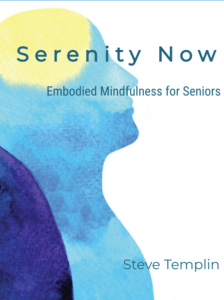Anxiety is an experience that is resisted by most everyone. It makes perfect sense that we’d resist what’s uncomfortable emotionally, just like we tend to resist the experience of physical pain.
The other side of the anxiety coin is that what we resist, or judge, tends to linger. You may have heard the phrase, “What you resist persists”.
An effective strategy for ‘not resisting’ anxious feelings is to experience them directly in the body as sensations, vibrations, or energy that occupies three-dimentional space. This strategy was discussed in my last post, Sensing the Body Quantum for HSPs.
In this post, we’ll explore the concept, or more fittingly, the experience of energy more thoroughly. In Asian Medicine, we have the concept of Chi or Qi that underlies the functioning of the mind and body. This is the energy that the acupuncturist, herbalist, or Qi Gong master assists in balancing in the pursuit of restoring health and well-being.
This energy is often considered to be mysterious or exotic and within the purview of the highly trained or gifted. The only thing about the energy that’s truly exotic is that a lot of what we know about it comes from exotic, far away places and cultures.
The truth is that we all experience this energy on a regular basis. It’s experienced as feelings and sensations in the body. Different individuals have different sensitivities to the energy. Some have the capacity to be aware of very subtle aspects of the energy while others are only aware of more gross aspects.
Highly sensitive people by their very nature are more sensitive to the experience of energy as sensations and feelings than others. The exception to that statement is when the HSP has unconsciously learned to reduce their sensitivity to protect themselves from feeling too much emotional discomfort. This can be a protective response to trauma.
Energy is Intelligent
Perhaps the most salient point regarding feelings as energy, or Qi, is that the energy is intelligent. It’s as if the energy has a mind of its own that knows when it’s being observed respectfully. That’s right, the energy knows when it’s being welcomed respectfully by consciousness or not.
This is really important because when we notice bodily felt experience respectfully, or curiously, (and it knows) the intelligence within the energy is free to flow and its natural direction of flow is to make us more whole, more authentic, and more resilient.
On the other hand, when we resist or judge our bodily experience as is common when the experience isn’t pleasant, the energy doesn’t respond in the supportive manner I just described. It not only doesn’t help us but if we’re in the habit of ignoring or resisting this felt energy, discomfort is likely to grow.
Anxiety is Subtle Energy
So if anxiety is a form of intelligent energy it would serve us to learn how to experience it respectfully, curiously, or at least non-judgmentally. This change in how we attend to anxiety, especially with practice, can be trusted to offer us relief.
Here’s a bit more on my perspective on anxiety as energy. We can think of anxiety as a flow of emotional energy that’s too strong for our comfort level. It may be that the energy has been ignored, judged, or blocked and as a result, it’s become compressed or pressurized. Then, when our defenses are lowered, or if the energy is triggered, the energy surges and we’re aware of ‘more’ than we’re accustomed to feeling. And that can range from us feeling mildly anxious to a full-blown panic attack.
I’ll offer some helpful brief practices that can be done at intervals during the day. I find that these brief, focused practices when repeated frequently are more productive than longer meditative practices done alone.
These exercises help us to engage the intelligence of the energy directly so that it’s free to balance us and allow us to feel less anxious and more comfortable.
During the day I can connect with the energetic terrain (bodily sensations) in brief bouts to show my system that it’s safe for me to feel. This will help me to create new neural circuits over time that allow me to experience more feelings, energy, etc. more safely. We might think of this as a shift in brain activity that allows more prefrontal activity and less old emotional programming coming from the amygdala. This shift allows the emotional energy to decompress and flow more evenly, leaving us with more ease and less fuel for anxiety.
Here are a few things you can do, ideally frequently and briefly, throughout the day. These suggestions will make more sense if the concepts about anxiety that I’ve shared above resonate with you. All of these suggestions will also support the creation of new neural circuitry, or neuroplasticity.
Get into the habit of just checking in with yourself briefly. Possibly on the hour ask yourself how you’re feeling. You might be concerned about an upcoming dentist visit or another less than pleasant experience. Notice how that makes you feel. Just feel the sensations and take a nice breath. That’s it.
You could also name the feeling. Notice the feeling and find a word or two that fits. If you decided to spend more time with the feeling, newer, better fitting words may reveal themselves. Better fit equals more neurological balancing and more calming alpha waves. And take a good sigh breath
You could also say something akin to, “Something in me is feeling (sad, angry, etc.) ….. Or “I’m aware of feeling (sad, angry, etc.) …. Or a part of me is feeling (……) . This is a top down way to create some perspective, less identification with feelings, or distance from feelings while at the same time strengthening your inner observer, or more essential self. It also strengthens the circuitry that supports that more essential sense of who you truly are. Breathe.
Any time you feel emotionally triggered you can immediately pause and do any of the above. Just ten seconds will be a helpful way to reframe your experience.
Practicing the Quick Coherence technique at brief intervals is very helpful for revamping neural circuitry. One minute at a time is good at intervals during the day. Notice your heart, breathe slowly, and think of something that you enjoy. Done.
One more option, you could do some expressive writing. Just write for a few minutes about how you feel. It’s as if you’re showing your inner emotional landscape that you welcome a connection. I find this very helpful in decompressing a store of pent up emotional energy.
When the anxiety is acute or more intense here are a few things to try.
Any of the above options if you can do them and if they give you some relief.
Movement. Move, dance, walk, run, play an active game …. (or imagine any of that). Much anxiety is a form of sympathetic arousal that gives us energy for running away or fighting … so physical movement can be a way to mobilize and relieve some of that energy.
Touch. Friendly touch may offer relief because touch signals safety to your brain. You could put a hand on your forehead and one on your heart (or wherever you feel anxious) and take a few sigh breaths. You could also gently hug yourself, or gently stroke down from your shoulders to your hands while you’re feeling what you feel and you’re doing the slow breathing. See what works best.
One more thing. Magnesium. It’s a natural beta blocker that most folks are deficient in (the stress response eats up magnesium) and some supplementation can be very helpful. I usually suggest 400-800 mg daily in divided doses. A bedtime dose of 300-400 mg can be helpful for both relieving anxiety and promoting more restful sleep.


 Steve is a retired Doctor of Oriental Medicine, Acupuncture Physician, and HeartMath Trauma-Sensitive Certified Practitioner with over 35 years of clinical experience in the fields of Energy Medicine, Energy Psychology, and Biofeedback.
Steve is a retired Doctor of Oriental Medicine, Acupuncture Physician, and HeartMath Trauma-Sensitive Certified Practitioner with over 35 years of clinical experience in the fields of Energy Medicine, Energy Psychology, and Biofeedback. 